The first manufacturer to guarantee a leak-free pool pump is definitely going to corner the market. Until that happens though, pumps will leak and pool owners will probably utter some choice words as they attempt to locate and troubleshoot the source. Let’s review some of the most common leaks and how to address them.
Suction Side Leaks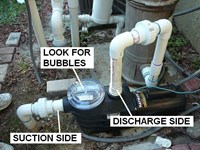
On the suction side of the pump, any leaks will be air leaks. This means air is being sucked into the system from some point between the skimmer and the impeller. With this type of leak, you will commonly see air bubbles in the pump strainer basket and at the returns in the pool wall.
You might feel daunted by the task of troubleshooting the entire suction side but there are several likely problem areas to check first:
Pump Strainer Lid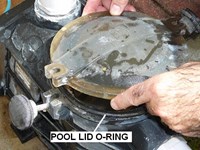
If not completely sealed, the strainer cover will allow air in. With the pump on, slowly pour water over the lid. If that decreases or eliminates air within the basket, you have found at least one leak. You might be able to get by with just cleaning and lubricating the lid o-ring but if it looks worn or misshapen, it is best to replace it. Also, be sure to check the lid for any cracks.
Cracked PVC and Valves
Cracks in plumbing connections and valves are common sources of air leaks. To test, you can try pouring water over these also. Even if a valve is intact, it might still need a replacement seal.
Low Water Level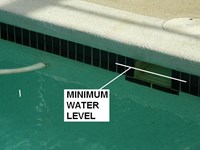
Probably the happiest cause of an air leak; this allows air to enter the skimmer but is easily addressed by adding water to the pool. Also, check for a stuck skimmer weir.
Strainer Basket Drain Plug
It’s small but this plug can let air in if the o-ring is bad. Inspect it for wear and tear and replace it if needed.
For visuals on troubleshooting suction side leaks, see our How to Identify & Correct Air Leaks guide and video.

Pressure Side Leaks
Any leaks on the pressure, or discharge, side of things will be water. Since this part of the system is under pressure, water will be forced out of any compromised area. The pressure side is anything located after the pump strainer. Signs of a problem are dripping or spraying at the discharge pipe fittings, water collecting underneath the pump, and reduced pool water level.
Impeller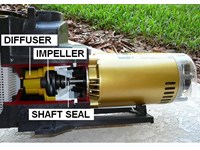
The impeller spins on the motor shaft and creates water pressure. If it gets damaged by lodged debris or simply worn from long use, the impeller can become the source of a water leak. You will need to remove the motor from the wet end of the pump in order to inspect and replace the impeller.
Housing O-ring or Gasket
If water is leaking from where the pump housing and motor meet, check for a worn seal here. Should it need to be replaced, it’s a good idea to replace the diffuser o-ring at the same time.
Discharge Pipe
You can have a poorly sealed fitting on this pipe, or possibly PVC shrunken from heat. If your schedule 40 pipe shrinks, a leak can form. To repair this and prevent it from happening again, try using schedule 80 pipe nipples on the suction and discharge. Schedule 80 is heavier duty and will stand up to heat better.
Pump Housing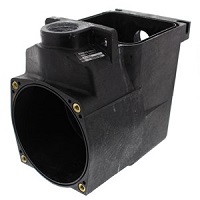
Cracks can develop in the pump strainer housing. Some try to repair hairline cracks but I have not heard of too many success stories over the years. It might be time to replace the housing, if the pump is fairly new, or consider a whole new pump.
Shaft Seal Leak
Between the pump motor and impeller is the all-important shaft seal that keeps water out of the motor. A leak here is a common cause of motor failure so it’s crucial to address quickly. Some signs are water coming from behind the seal plate and collecting underneath the pump where the motor and wet end meet. You might also hear some abnormal pump noises; this comes from the bearings as the water gets inside the motor.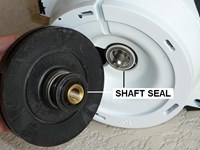
A common cause of this leak is replacing the motor but failing to replace the shaft seal at the same time. Reusing the old seal is a bad idea, as seals warp over time and will likely not mate properly with the new motor.
The advice here is simple – replace the shaft seal. If a tune-up kit is available for your particular pump make and model, it is the perfect time to also replace o-rings and gaskets while you have the whole pump apart.
If checking all of the above fails to locate and troubleshoot your pool leak, it could be in the underground plumbing. Checking this will depend upon your level of proficiency and how accessible those lines are. As much as I hate to say it to any and all with DIY hearts, it might require the help of a pool professional and a dip into your pool bankroll.

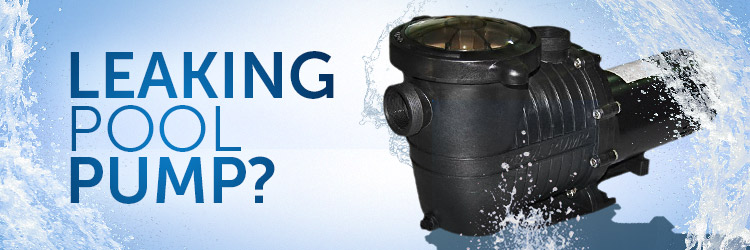

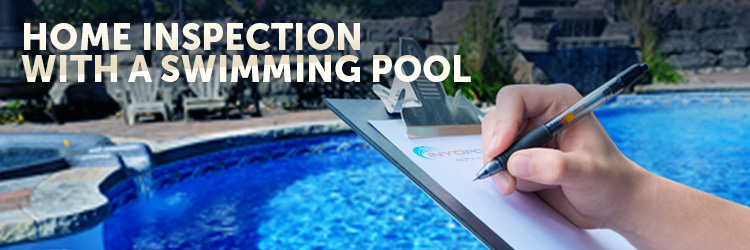
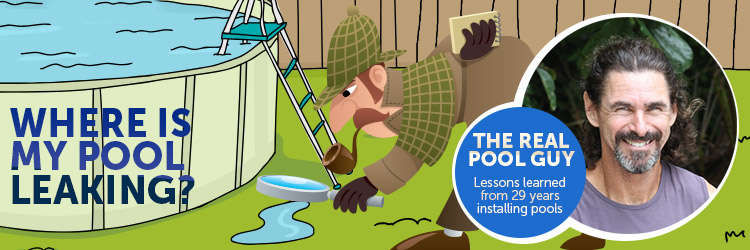







Replaced housing gasket and still leaks at pump housing. GO-KIT II (replaced all seals) It’s a Hayward spa pump with no strainer basket/primer. Leak is mostly at the top. How tight (torque specs) can the bolts be tighten? Not sure further tightening will resolve. Suggestions?
A GOKIT2 is specifically for a Hayward Super II which has a strainer assembly molded into the housing. The pump you’re describing is not a Super II. If you used the wrong GOKIT, it would explain why the pump is not properly sealing.
Hey Matthew, I have a Whisperflo WC60, and have completely replaced the pump, shaft seal, impeller, diffuser, and plate. (purchasing the GOKIT from Inyopools, pump, all gaskets, etc) After completing the work, I’m still getting a very small and slow drip that’s coming from the bottom of the pump motor itself. Everything sounds and looks great, except for this slow drip. Thoughts?
I’d break down the pump again to see if the housing gasket is pinched or out of place. if it is the shaft seal, it may be sitting in the seal plate correctly.
Matthew I’ve been through 4 new Hayward pumps in a month and a half. They all leak at the shaft. Any ideas?
Are you replacing the whole pump or just the motor? It seems very unlikely, that you would buy 4 whole pumps and they all leaked. It seems more likely that you tried replacing the motor 4 times that are then having leak issues. If the latter is the case, then you probably are not installing the shaft seal correctly; or not as all. When replacing a motor, the shaft seal needs to be replaced or you will invite all that water from your pump straight into your brand new electric motor.
More info – Pool Parts 101: The Difference between a Pump and a Motor
I am also having the same issue. Pump leaking at seal, entire Hayward omni vs 500 pump assembly replaced and leaking pretty much right away again! With 3 pumps now!! Is this common, or is there something else that could cause this issue on new pumps we should be looking for? A component that can cause this? We have flow, water level is ok, chemistry balanced, no leaks we can see/hear/find. Pressure gauge on filter ok too.
I don’t know if that is a common problem with that pump as that is a trade-grade model, only sold in brick-and-mortar stores. But if 3 have failed with the same issue, I’d probably pick a different brand or model, or demand a more experienced technician installs it for you.